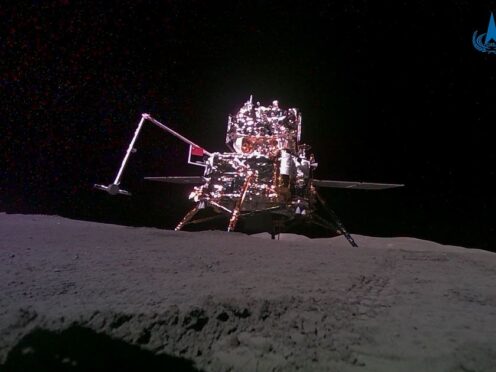
China’s Chang’e 6 probe returned on Earth on Tuesday with rock and soil samples from the little-explored far side of the Moon in a global first.
The probe landed in the Inner Mongolian region of northern China on Tuesday afternoon.
Chinese scientists anticipate the returned samples will include 2.5-million-year-old volcanic rock and other material that they hope will answer questions about geographic differences on the Moon’s two sides.
While past Us and Soviet missions have collected samples from the Moon’s near side, the Chinese mission was the first that has collected samples from the far side.
The near side is what is seen from Earth, and the far side faces outer space.
The far side is also known to have mountains and impact craters, contrasting with the relatively flat expanses visible on the near side.
New in @The_InnovationJ! Geological context of Chang’e-6 landing area and implications for sample analysis.In this study, Yue et al. conducted a detailed analysis of the sampling area of Chang’e-6 (CE-6). Their findings are expected to provide important information for the… pic.twitter.com/gjo0qtGqS6
— The Innovation: a Cell Press partner journal (@The_InnovationJ) June 25, 2024
The probe left Earth on May 3, and its journey lasted 53 days. It has drilled into the core of the Moon and scooped rocks from the surface.
The samples “are expected to answer one of the most fundamental scientific questions in lunar science research: what geologic activity is responsible for the differences between the two sides?” said Zongyu Yue, a geologist at the Chinese Academy of Sciences, in a statement in the Innovation, a journal published in partnership with the Academy.
In recent years, China has launched multiple successful missions to the Moon, and has collected samples from its near side with the Chang’e 5 probe.
Scientists are also hoping the probe will return with material that bears traces of meteorite strikes from the Moon’s past.

Enjoy the convenience of having The Sunday Post delivered as a digital ePaper straight to your smartphone, tablet or computer.
Subscribe for only £5.49 a month and enjoy all the benefits of the printed paper as a digital replica.
Subscribe